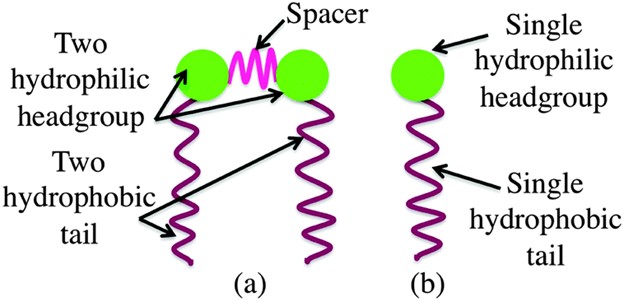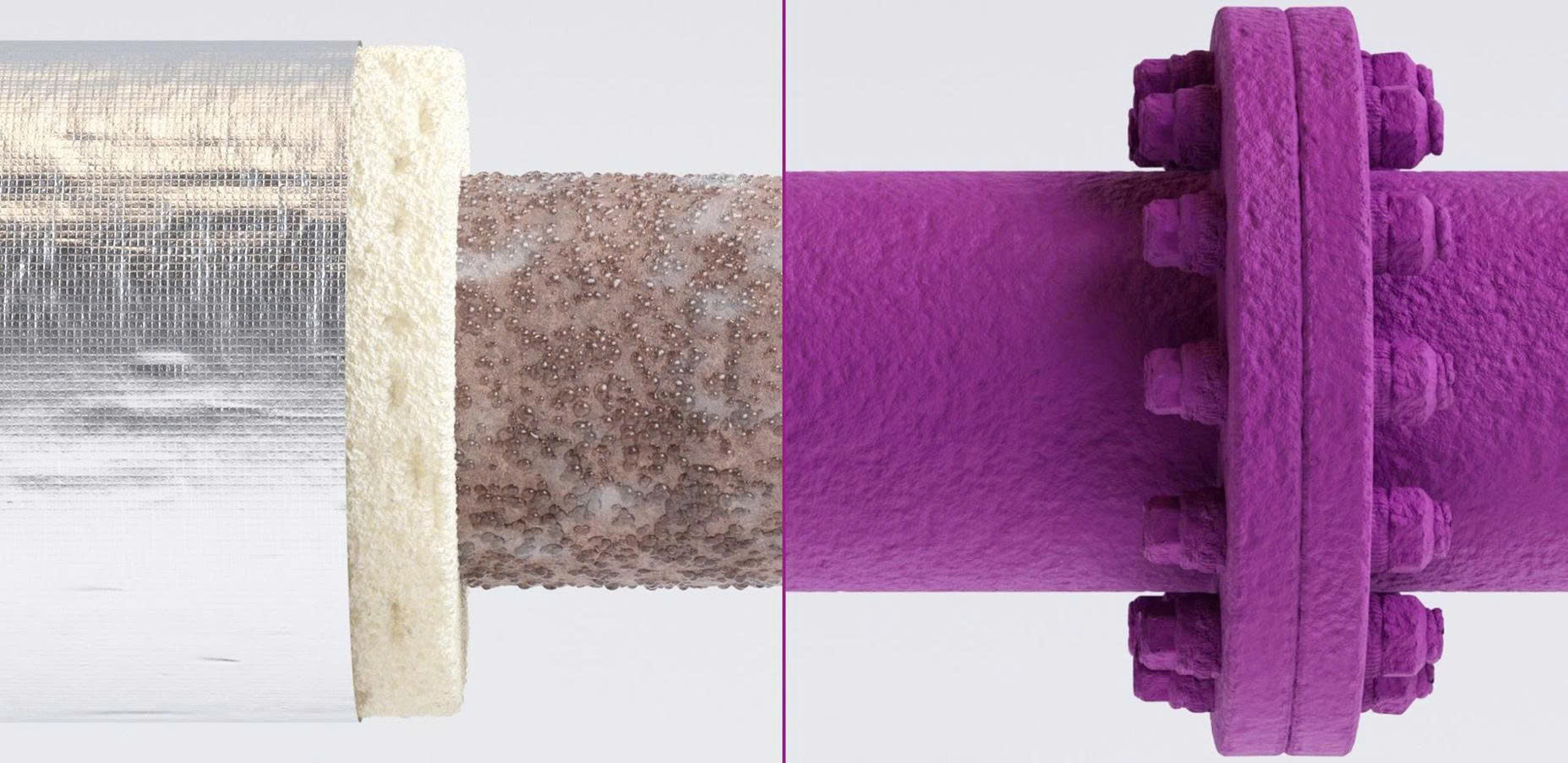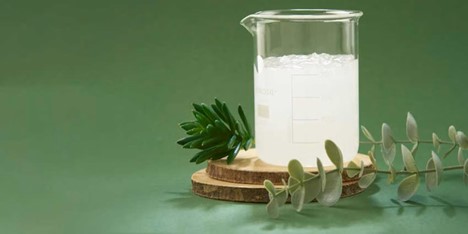
Evonik already has effective solutions for anti-fouling coatings in its portfolio. The Group’s researchers are now working on new raw materials for coatings for effective protection of ship hulls against bio-fouling that use fewer biocides, or even dispense with these altogether.
Maritime transport is the first preference for cargo; nearly 90 percent of all goods transported worldwide are carried by more than 50,000 ships plying the world’s oceans. The commercial viability of the global merchant fleet depends heavily on the shell of the vessels. Bio-fouling, caused by plant and animal growth on the hull under the waterline is a particular concern. Proteins, carbohydrates, and other micro-nutrients from the ocean attach themselves to the hull only seconds after its first contact with sea water. As nutrients, they attract marine organisms that then settle on the shell. The bio-films thus formed are highly complex habitats in which several hundred species interact with one another positively or negatively, hindering the movement of ships on the world’s oceans.
The significant roughening of the hull’s surface due to bio-fouling leads to a drastic increase in frictional resistance during movement. The result is a vicious circle in which, to maintain the same speed of travel, the ship needs more energy and fuel, with an associated rise in CO2 emission. Current studies indicate that even slight encrustation raises fuel consumption by up to 30 percent. In addition, the maneuverability of the ships is reduced and the risk of corrosion increases. Hence, ships need more frequent stays in the dry dock for cleaning and repairs. Short maintenance cycles and increased fuel consumption result in high costs for shipping companies. And the climate is also affected: Even a thin bio-film gives rise to CO2 emissions of more than 270 million metric tons every year.
Demand is therefore high for coatings that protect ships’ hulls from bio-fouling. These anti-fouling coatings prevent the settling of marine organisms and counteract the negative effects of bio fouling. But the search for the right coating is a challenge. The most effective method known so far for protecting the hull is a biocide-containing coating. Its functioning is based on a leaching process in which active toxic substances are dissolved out of the coating matrix and arrive at the surface of the ship’s hull. Here, they form a kind of biocide cloud around the ship and damage microorganisms before these can settle on the hull. Among the best known of the biocides is tributyltin hydride (TBT), an organometallic complex of tin. But there’s a problem here: Investigations have revealed that the toxicity of the biocides is not confined to organisms at the hull’s surface but extends also to other species in the sea. Even a low TBT concentration, for example, interferes with shell growth in Pacific rock oysters. In snails and other species TBT induces imposex, a condition in which female animals develop male sex organs and vice versa, so that reproduction is no longer possible and the species is in danger of extinction. To protect marine organisms, therefore, the use of TBT-based underwater paints is banned worldwide, and no biocides based on toxic tin, arsenic, or mercury compounds may be used any longer. This has spurred the search for alternatives thatare equally effective but also eco-friendly. But despite considerable efforts an entirely satisfactory solution to the problem has not yet been found. In the absence of suitable alternatives, biocides are still used in anti-fouling coatings. The active agent of choice today is copper oxide, which is regarded as more eco-friendly than TBT and acts on the same leaching principle. But it too is a heavy metal oxide and the copper ions dissolving out from the coating can be toxic in high concentrations. And so the search continues for a new and better anti-fouling solution.
COATINGS WITHOUT BIOCIDES
This is where Evonik comes into the picture. The Coating Additives Business Line is in the process of establishing a Smart Surface Solutions Competence Center to resolve open questions in coating technology. The team also plans to develop an eco-friendly alternative to the current anti-fouling solutions, entirely without biocides. The researchers are putting their existing expertise in the area of silicones to good use. Evonik has a silicone-epoxy hybrid resin system, called SILIKOPON® EF in its portfolio, whose anti-adhesive action makes it difficult right from the start for organisms to settle. This is due to the very low surface tension and extremely smooth surface of the hybrid. Organisms like algae, bivalves, and barnacles have difficulty adhering to this surface. Even if they do initially succeed, the smooth surface is easily cleared because the organisms become detached by the water stream once the ship starts to move, even at slow speeds. As an added plus, SILIKOPON® EF has high mechanical and chemical resistance, which prevents long-term corrosion damage.
The researchers want to exploit these advantages and add another property: The new coating binder should prevent organisms from adhering to the hull because they cannot recognize the surface as such. For this purpose the scientists are combining the hydrophobic silicone with a hydrophilic polymer to produce what is known as amphiphilic polymers, in which hydrophilic and hydrophobic areas alternate.
The hydrophilic areas form a film of water around the polymer that masks the surface to the organisms. These can no longer identify the surface, unambiguously, and prefer not to settle on it. The researchers are exploiting a natural principle here: Living beings always seek out the most favorable habitat for reproduction.
DECREASING COSTS
The researchers are well on the way to finding a solution. They have been able to show in tests that the novel coatings raw materials are non-toxic, and have an efficacy comparable to that of binder systems already used on the market. In close cooperation with customers, the aim is to develop durable and protective coatings based on these polymers. The researchers are optimistic that they will soon be able to increase the intervals between re-coating the ships. In this way, shipping companies would be able to reduce maintenance costs for ships as well as overcoming the other disadvantages of fouling. To achieve this, the researchers are using various test methods to further optimize the binder systems. In collaboration with the University of Münster, new screening tests have been developed that allow prediction of the anti-fouling performance of the coatings after only six weeks. If a tested substance already shows undesirable toxic properties in the initial laboratory test, it is rejected or the formulation is revised. If, on the other hand, it is promising, it is tested in the sea. Every year between March and October the experts suspend variously coated test panels to the sea. In this period with high “growth pressure”, the tendency for bio-fouling is at its peak and the rate at which growth will develop under real conditions becomes clear. Only then is it possible for the researchers to reliably assess the efficacy of new formulations.
This is why Evonik is not only developing a completely new solution but is concurrently working on improving existing anti-fouling coatings. Researchers of the Coating Additives Business Line have developed a hydrophilic structurally modified AEROSIL® that significantly improves the efficacy and service life of anti-fouling coatings. Coatings manufacturers can formulate the product, marketed as VP 4200, in combination with copper oxide to enhance the action of the latter. VP 4200 interacts with the copper oxide, fixing it in the film, which becomes tougher and more resistant. Thus, the copper oxide is available over a longer period of time. If the liquid coating contains ten percent VP 4200, effective protection against bio-fouling can be achieved with a significantly lower copper oxide content of about six percent. This is 80% less than in conventional formulations, which normally contain 30% or more copper oxide.
Mercury Chemical has been an official Distributor of Evonik in Vietnam to bring you the best anti-fouling solution for your business



